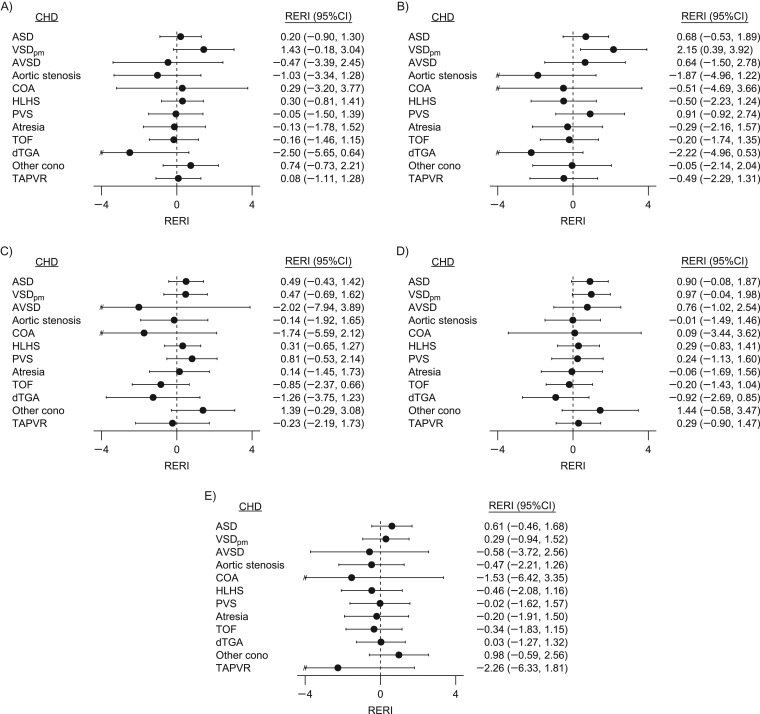Figure 2.
Relative excess risk due to interaction (RERI) between maternal nitrogen dioxide (NO2) exposure and methyl nutrient intake, National Birth Defects Prevention Study, United States, 1997–2006. For choline (A), methionine (B), dietary folate equivalents (C), vitamin B6 (D), and vitamin B12 (E). RERIs were calculated by comparing odds ratios of women with NO2 exposure greater than or equal to the 90th centile and nutrient intake less than the 25th centile, women with NO2 exposure greater than or equal to the 90th centile and nutrient intake greater than or equal to the 25th centile, and women with NO2 exposure less than the 10th centile and nutrient intake greater than or equal to the 25th centile (referent: women with NO2 exposure less than the 10th centile and nutrient intake greater than or equal to the 25th centile of nutrient intake). Confidence intervals (CIs) were calculated based on Wald-type statistics, as proposed by Hosmer and Lemeshow (42). ASD, atrial septal defect; AVSD, atrioventricular septal defect; CHD, congenital heart defect; COA, coarctation of the aorta; dTGA, dextro-transposition of the great arteries; HLHS, hypoplastic left heart syndrome; other cono, other conotruncal defects; PVS, pulmonary valve stenosis; TAPVR, total anomalous pulmonary venous return; TOF, tetralogy of Fallot; VSDpm, perimembranous ventricular septal defect. “//” indicates truncation of the confidence interval.

